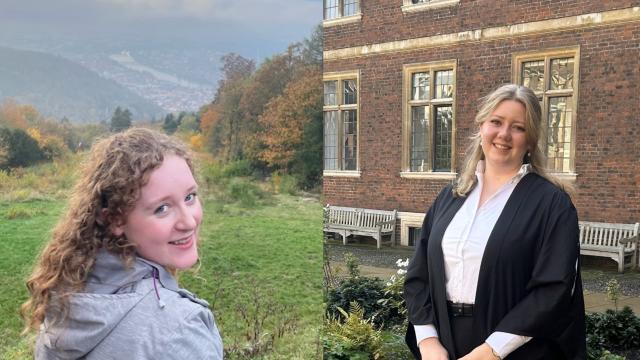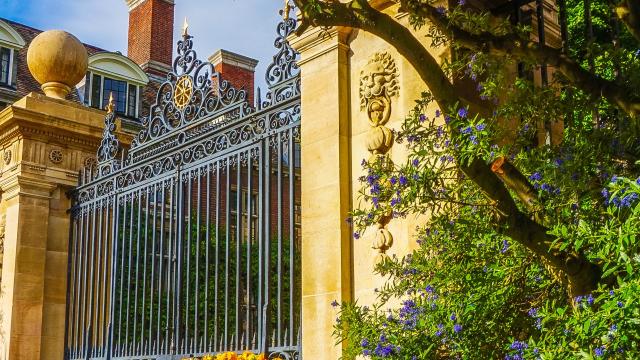Anglo-Saxon, Norse, and Celtic (ASNaC) is a degree course unique to Cambridge. It focuses upon the history, languages and literatures of the different peoples of the British Isles and Scandinavia in the early medieval period. It is a distinctive course, which allows for the combination of subjects and techniques rarely taught together, but which mutually reinforce one another in the pursuit of a broad and detailed understanding of the world of which early Britain was a part: it is cross-cultural (involving the study of English, Celtic and Scandinavian materials) and inter-disciplinary (offering a variety of historical, linguistic and literary topics). Several of the subjects taught in ASNaC (including palaeography and codicology, the study of medieval scribes and manuscripts) are seldom if ever available in other degree courses at the undergraduate level.
The ASNaC Tripos is examined in two Parts; Part I comes at the end of the second year, with the more advanced Part II at the end of the third. The course is taught in a variety of forms, ranging from lectures and seminars (including language and translation classes) to supervisions. The latter, a mainstay of the Cambridge system, are (ordinarily one-to-one) meetings organized through College, for which students write essays and then discuss them with a subject specialist; these will be arranged by your Director of Studies, with whom you will also have regular meetings to discuss and plan your work. The ASNaC experience is, moreover, enhanced by the small size and friendly nature of the department: its tight-knit, thriving community of undergraduates, post-graduates and senior members means that it is easy to find a like-minded person with whom to discuss your work, whether formally or informally.
Reading ASNaC will give you access to library and other information resources that are second to none. As well as the library holdings at St Catharine’s, kept in the eighteenth-century Sherlock Library, the ASNaC department has a very well-stocked library of its own, which functions as part of the English Faculty Library and from which books may be borrowed. Students also have access to the unparalleled resources of Cambridge University Library, a major copyright library with one of the most important collections of manuscripts and early printed books in the UK; the libraries of other Cambridge colleges also hold significant collections of manuscripts relevant to the period studied by those taking ASNaC.
Like most subjects in the Arts and Humanities, ASNaC is not a vocational course that prepares students for a specific career; but the skills that can be acquired over the three years of the degree are many and varied, and should most importantly provide a thorough grounding in the careful interrogation of a variety of sources from different points of view (literature, history, linguistics), and in the reasoned construction of sound, detailed arguments, whether orally or in writing. Recent ASNaC graduates have put these skills to good use in a wide range of jobs, including careers in law, finance, publishing, teaching, the civil service, the armed forces, the police, computing, television and journalism, besides those who have chosen to progress to post-graduate level research.
The Director of Studies in ASNaC at St Catharine’s is Professor Richard Dance, whose special interests include Old English language and literature and Germanic philology.
Faculty website: http://www.asnc.cam.ac.uk
St Catharine’s usually admits one or two undergraduates to read ASNaC every year. We maintain a good stock of books relevant to the tripos in the college’s eighteenth-century Sherlock Library, and with our central Cambridge position we are a short walk from both the ASNaC department itself and the University Library. The Director of Studies, Dr Richard Dance, is a Fellow of the College.
As a degree course, ASNaC has many aspects in common with the other Humanities triposes, especially English, History, Classics and Medieval & Modern Languages. It will therefore appeal to any prospective student of these and similar subject areas, especially those with an interest in pursuing texts and their traditions back into the Middle Ages and beyond. But in its unique combination of disciplines, ASNaC offers the student both a greater spread of topics and a greater detail of engagement with the full range of sources than is possible with these more ‘traditional’ courses. At the same time as looking at the history of early medieval Britain, Ireland or Scandinavia, that is, one is able to examine original texts relevant to this study in their original language, whether Old English, Old Norse, medieval Welsh or Irish, or Insular Latin. ASNaC has, moreover, a very strong tradition of literary scholarship, giving students access to great works of literature like Beowulf, the Icelandic sagas, The Mabinogion, The Táin and the poetry of Aldhelm, again all in their original languages, and making use of the latest editions, critical writings and electronic resources in exploring them. All this makes for an intellectually challenging, and highly rewarding, combination.
No prior knowledge of any of the ASNaC subjects is necessary in order to apply (though you will normally be expected to have demonstrated an aptitude for other linguistic, literary and/or historical subjects).
Find out about the general advice for anyone applying for undergraduate courses at St Catharine's.
Not many students at St Catharine’s, or indeed any college, are known as the Mead Sisters. Since ASNC is a small course it is rather unusual for there to be more than one ASNC per year at St Catharine’s, or at the other colleges. But we happened to be among the lucky ones. We also found that mead is the perfect ice breaker during freshers’ week. However, even if you happen to be the only one in your year group, there is no need to fear, because St Catharine’s is the friendliest college at Cambridge (seriously!). In addition, since the ASNC department is housed in the English faculty, there is often a natural affinity between ASNCs and English students, strengthened by shared papers, including Middle English, which is taught by one of our fellows. Speaking of, you will be the envy of all your ASNC peers since as an ASNC at St Catharine’s you will have the fortune of having the friendliest and most amiable Director of Studies around: Dr Richard Dance.
Though the college is small, there are plenty of academic resources available. The old Sherlock library, which is also the cosiest and prettiest of our two, houses most of the relevant literature. Students of Old and Middle English will find the library especially well-stocked considering that it is Dr Dance’s area of expertise, but there are also plenty of books available on Anglo-Saxon and Brittonic History, as well as Palaeography and Codicology. This said, ASNC frequently requires specialist reading, meaning that the UL and the ASNC library will often be your first port of call. Luckily, both of these libraries lie but a 10 minute walk away. In fact, the central location of the college means you are rarely beyond walking distance from anything you might need. Not only will you be within close proximity of your department and libraries, if you decide to study ASNC at St Catharine’s, you will find a wealth of material at your disposal within the college itself. Perhaps most importantly you will be in a friendly, welcoming and supportive environment of people interested in who you are and what you do. (Even if you have to tell them half a dozen times to get past ‘so it’s Lord of the Rings, then?’)
Ella Watts and Emilia Henderson (third-year ASNC students)



